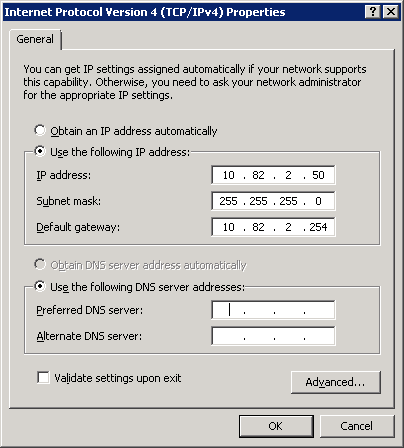

- Hyperterm for windows 2008 to configure cisco install#
- Hyperterm for windows 2008 to configure cisco serial#
- Hyperterm for windows 2008 to configure cisco windows 10#
However, in some Windows 10 builds the option is not available on some reasons (there are different problems: you cannot edit the field, the setting is not saved, or the setting form is not opened when you click TCP/IPv4 properties), so you may have to use other ways to solve the problem. Make sure that Use default gateway on remote network option is checked in the IP Settings tab.Īfter you uncheck the “ Use default gateway on remote network” option and reconnect to your VPN gateway, you will have access Internet on your computer through your ISP connection.Open the Networking tab, select Internet Protocol Version 4 (TCP/IPv4) and click Properties.On the next window, change the Baud rate to 9600 and click OK. On the next window that appears, make sure that the Connect Using field says COM1 and click OK. Connect your Cisco device to your PC’s COM1 port but don’t turn it on yet. Open the list of network connections in the Control Panel ( Control Panel\Network and Internet\Network Connections) and go to the properties of your VPN connection Type in the word cisco for the connection name and click OK.On the next window that appears, make sure that the Connect. Connect your Cisco device to your PC’s COM1 port but don’t turn it on yet. PuTTY is an SSH and telnet client, developed originally by Simon Tatham for the Windows platform. The easiest way is to change TCP/IP settings of your VPN connection through the Control Panel. Type in the word cisco for the connection name and click OK. All of the devices used in this document started with a cleared (default) configuration. Using Set-VpnConnection cmdlet with the SplitTunneling parameter in PowerShell Windows 2008 R2 Server with Active Directory services and NPS role installed The information in this document was created from the devices in a specific lab environment.In Windows 10, you can enable split tunneling (disable Internet traffic routing through a VPN tunnel) in three ways: After disconnecting from VPN, all user traffic will go through a common network and the Internet access will appear.Ī mode, when some traffic (access to corporate resources) is sent through a VPN tunnel and the rest of traffic (Internet access) goes through a local network connection, is called split tunneling. If remote clients are allowed to access only local corporate resources and the Internet access is restricted on the VPN server, a remote user won’t be able access external websites and other Internet resources from their computer. I then began searching for the Hyperterm program to gain access to the Cisco routers.
Hyperterm for windows 2008 to configure cisco serial#
I made my serial connections to the router and was already to go.
Hyperterm for windows 2008 to configure cisco install#
It means that all traffic from your computer is sent through a VPN tunnel. I arrived on site to install and configure some Cisco routers and booted up the laptop with Windows Vista Business edition. Select ‘ Unencrypted Authentication PAP SPAP” > Next > No > Next > Next > Finish.When creating a new VPN connection in Windows (all version), the option Use default gateway on remote network is enabled by default. Add in the AD security group you want to allow access to > OK > Next > Next.Ģ2. Now right click ‘Network Policies’ > New > Give the policy a name> Next.Ģ1. Change the attribute to User-Name > Next > Finish.ġ9. Specify the name you set up above (number 14) > OK > Next > Next > Next.ġ8. Add a condition > Set the condition to ‘Client Friendly Name’ > Add.ġ7. Expand policies > right click ‘Connection Request Policies’ > New > Give the policy a name > Next.ġ6. Give the firewall a friendly name, (take note of what this is, you will need it again) > Specify its IP > Enter the shared secret you setup above (number 5) > OK.ġ5. Expand RADIUS Clients and Servers > Right click RADIUS Clients > New.ġ4. Register Server in Active Directory >OK > OK.ġ3. Whilst still in Server Manager > Network Policy and Access Server > NPS (Local).ġ2. Select ‘Network Policy Server’ > Next > Install.ġ1. If you get a welcome page > Next > Select Network Policy and Access Server > Next >Next.ĩ. On the Windows 2008 Server > Launch Server Manager > Roles > Add Role.Ĩ. Aaa-server PNL-RADIUS (inside) host 172.16.254.223Įxit Step 2 Configure Windows 2012 Server to allow RADIUSħ.


 0 kommentar(er)
0 kommentar(er)
